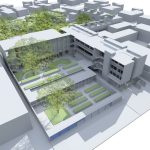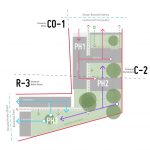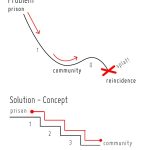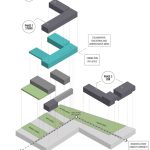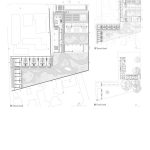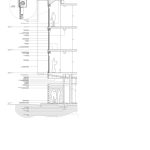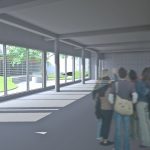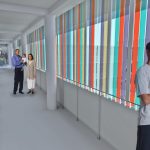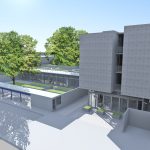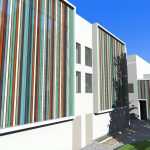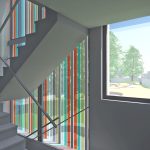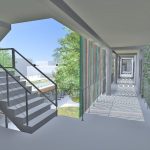Vivienda para jóvenes ex-convictos con familia que han de reintegrarse a la libre comunidad
” […] este lugar ha de ser una oportunidad para los individuos reencontrarse y reinventarse a sí mismos; mientras adquieren destrezas laborales, educativas y sociales, generan una mentalidad saludable y alcanzan la rehabilitación”. – Llorelys Martínez
Designer: Llorelys Martínez
Capstone Director & Committee: José Coleman-Davis, Víctor Nieto, Juan Penabad
Capstone Date: June 2013
TOS[er]: Solangely Rivera
TOS Post: May 2016
En el 2008, los Estados Unidos se convirtió en el sistema de justicia criminal más grande del mundo. (J. Ross, 2009) La alta incidencia y reincidencia del crimen era alarmante tanto en Estados Unidos como en Puerto Rico. Mientras en E.U. la reincidencia criminal era de aproximadamente un 16% a nivel general, contrasta con los índices de la Isla. Este último, con tan solo 100 millas por 35, para el 2007 se tiene aproximadamente un 60% de reincidencia criminal, lo que nos lleva a cuestionar los sistemas de penalidad y rehabilitación de los ex convictos. Con la intención de bajar esas estadísticas, se propone a manera de plan piloto en un área de Hato Rey, Puerto Rico; un espacio de adaptación y apoyo donde los jóvenes ex convictos puedan quedarse a vivir temporeramente. “Como objetivo principal, este lugar ha de ser una oportunidad para los individuos reencontrarse y reinventarse a sí mismos; mientras adquieren destrezas laborales, educativas y sociales, generan una mentalidad saludable y alcanzan la rehabilitación.”(L. Martínez, 2013) El proyecto funciona en fases y la transición entre ellas ocurre en tres ámbitos simultáneamente: arquitectónico, natural y social. A través de la arquitectura terapéutica y de sanación se pretende crear un espacio óptimo cuyos conectores hacia la naturaleza sean los entes idóneos donde puedan generar las capacidades para la re-socialización, re-estructuración y por consiguiente, la re-integración a la libre comunidad. En fin, alcanzar de manera efectiva la transición entre la cárcel y el entorno social.
In 2008, the United States became the system with the world’s largest criminal justice. (J. Ross, 2009). The high incidence of crime and recidivism was alarming in both the United States and Puerto Rico. While in U.S. recidivism was approximately 16% at a general level, in contrast to the indices of the island. The latter, with only 100 miles per 35, for 2007 it had approximately 60% of recidivism, which leads to question penalty systems and rehabilitation of former convicts. With the intention to lower those statistics, it is proposed as a pilot plan in an area of Hato Rey, Puerto Rico; a space of adaptation and support where young ex-convicts can stay and live temporarily. “The main objective, this place must be an opportunity for individuals rediscover and reinvent themselves; while acquiring labor, education and social skills, create a healthy mentality and achieve rehabilitation “(L Martinez, 2013). The project works in phases and the transition between them occurs in three areas simultaneously: architectural, natural and social. Through the therapeutic and healing architecture it is to create an optimal space which connectors to nature are the appropriate entities where they can generate the capacity for re-socialization, re-structuring and therefore the re-integration into the community. Finally, effectively achieve the transition between prison and the social environment.

